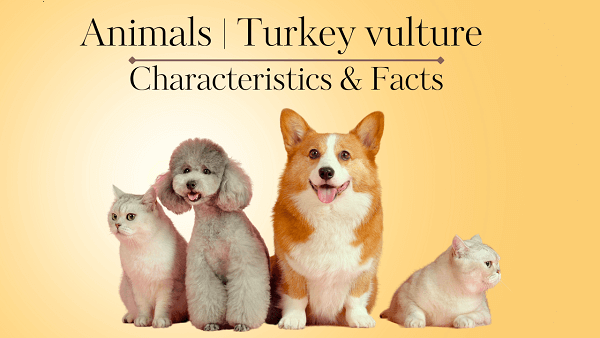Turkey vulture Definition | Characteristics & Facts
Home » Animals » Turkey vulture Definition | Characteristics & Facts

Turkey vulture Definition
The turkey vulture (Cathartes aura) is a large bird of prey found in the Americas.
Turkey vulture General Characteristics & Facts
Appearance
The Turkey Vulture has a distinctive appearance with a wingspan of about 5.6 to 6.5 feet (1.7 to 2 meters) and a body length of around 25 to 32 inches (64 to 81 centimeters). It has dark brown to blackish feathers and a featherless, red head. The bare skin on its head helps in maintaining cleanliness while feeding on carrion.
Range and Habitat
Turkey Vultures are native to the Americas. They can be found from southern Canada to the southernmost parts of South America.
Feeding Habits
Turkey Vultures are scavengers and primarily feed on carrion (dead animals). Their keen sense of smell helps them locate carcasses from high altitudes. They play an important role in the ecosystem by cleaning up carrion, which helps prevent the spread of diseases.
Flight
They have broad wings and a light body, allowing them to glide effortlessly for long distances without flapping their wings extensively. They often fly in circles, taking advantage of thermals (updrafts of warm air) to gain altitude.
Social Behavior
Turkey Vultures are generally non-aggressive birds. They are often seen in groups called “kettles” while soaring in the air or roosting. Roosting sites can contain dozens or even hundreds of vultures, where they gather to rest and socialize.
Reproduction
Turkey Vultures form monogamous pairs, and both parents participate in raising the young. They build their nests on the ground or in cavities such as hollow trees or abandoned buildings. The female typically lays one to three eggs, which both parents take turns incubating for about a month.
Conservation Status
The Turkey Vulture is listed as a species of “Least Concern” on the IUCN Red List of Threatened Species. They have a wide distribution and a large population size. However, they can face threats such as habitat loss, collisions with vehicles, and occasionally, poisoning from consuming carrion contaminated with toxins.
Cultural Significance
Turkey Vultures hold cultural and symbolic significance in some indigenous cultures of the Americas. They are often associated with purification, renewal, and the cycle of life and death.
Read our Animals Encyclopedia with Complete Facts
Physical Characteristics of Turkey Vulture
- Size and Wingspan: Turkey vultures are large birds with a wingspan ranging from 5.5 to 6.5 feet (1.7 to 2 meters). They measure around 25 to 32 inches (64 to 81 centimeters) in length from beak to tail. They have a relatively large, broad-winged body.
- Feathers: The feathers of turkey vultures are predominantly dark brown to black, providing effective camouflage during flight. Their plumage is not as glossy as that of many other bird species, giving them a somewhat dull appearance.
- Head and Neck: Turkey vultures have a featherless head and neck, which are red in color. The bare skin on their head serves a purpose—when feeding on carrion, it minimizes bacterial buildup and makes it easier to keep clean.
- Beak: They have a long, hooked beak that is adapted for tearing and consuming carrion. The beak is relatively short compared to other vultures and lacks the sharpness of raptor beaks.
- Sense of Smell: Turkey vultures possess an exceptional sense of smell, allowing them to locate carrion from long distances. They have specialized olfactory receptors in their nostrils that detect the scent of decaying flesh, aiding them in their scavenging behavior.
- Flight: Turkey vultures are renowned for their effortless soaring flight. They have long, broad wings that enable them to glide for extended periods, utilizing updrafts and thermals to soar to great heights while conserving energy. They often hold their wings in a V-shape during flight.
- Talons: While not as prominent as those of raptors, turkey vultures have strong, curved talons. These talons are adapted for perching and gripping while on the ground or in trees.
Continue To Explore All Animals That Start With T
Scientific Classification of Turkey Vulture
Kingdom: Animalia (Animals)
Phylum: Chordata (Chordates)
Class: Aves (Birds)
Order: Cathartiformes (New World vultures)
Family: Cathartidae (New World vultures)
Genus: Cathartes
Species: Cathartes aura
Key Locations of Turkey Vulture
- North America
- Central America
- South America
- Caribbean Islands
- Coastal Regions
View All A-Z Animals List
Turkey Vulture FAQs
What does a Turkey vulture eat?
- Carrion
- Dead Animals
- Roadkill
- Opportunistic Feeding


